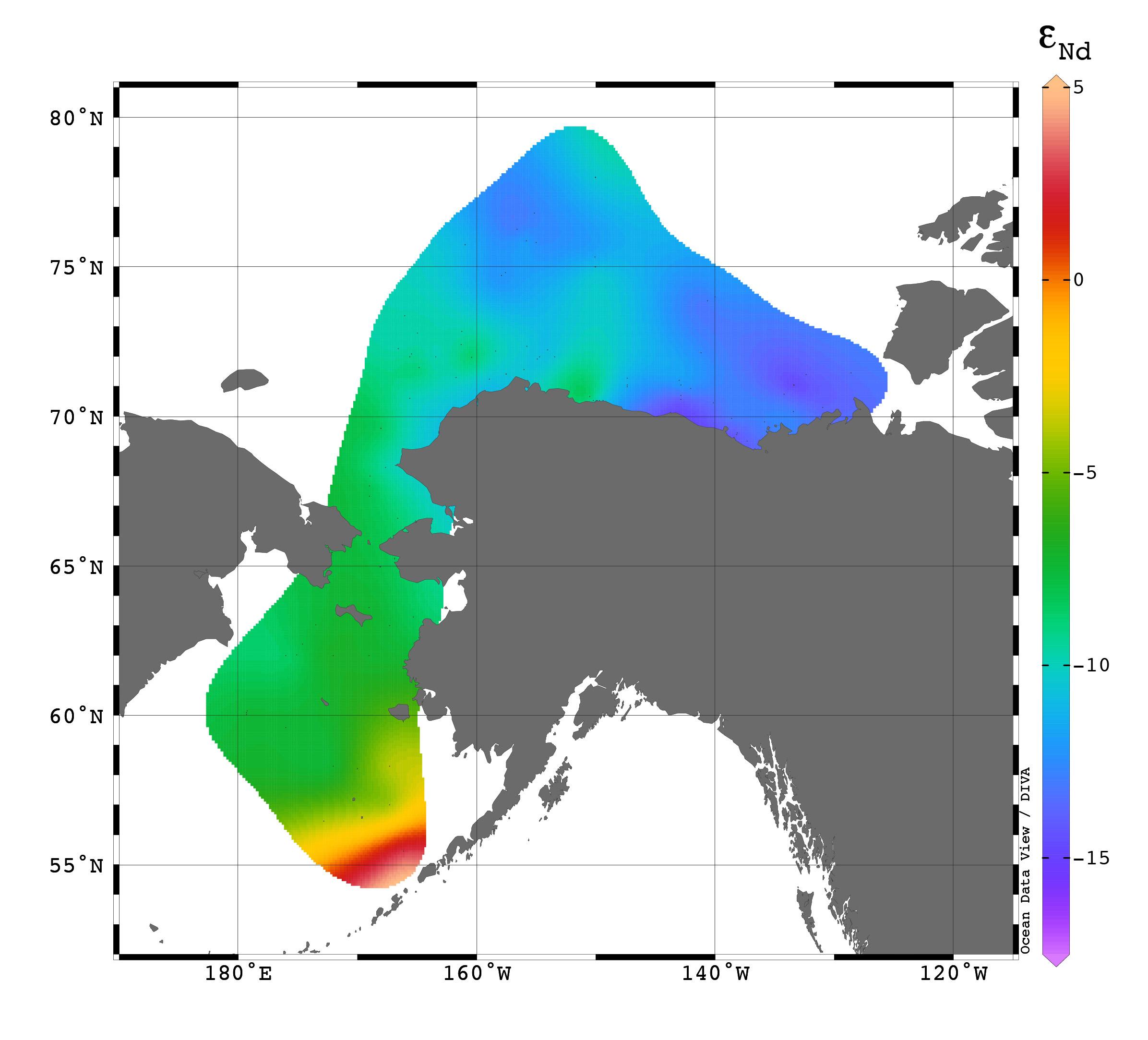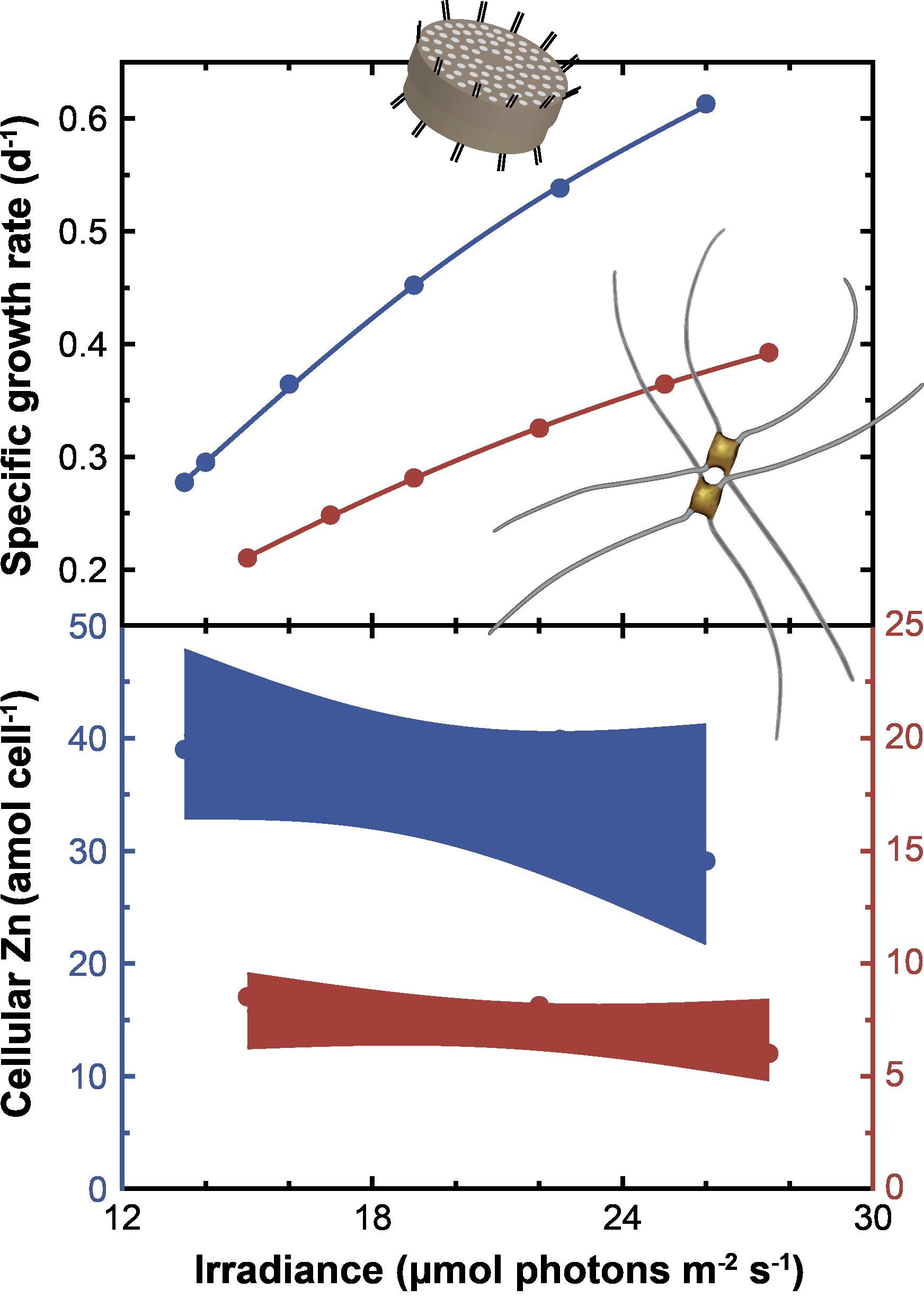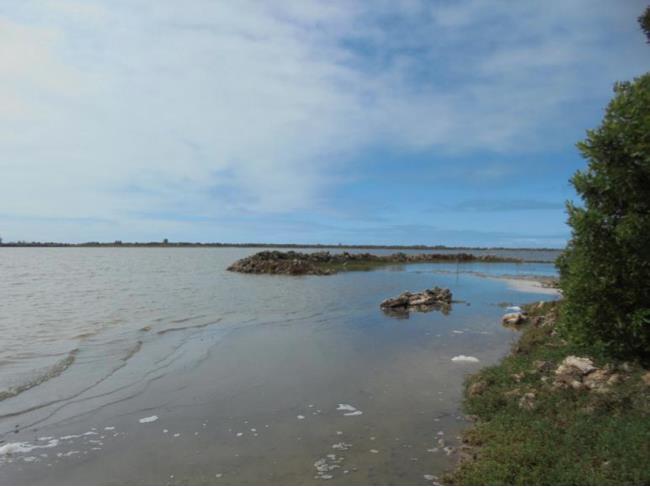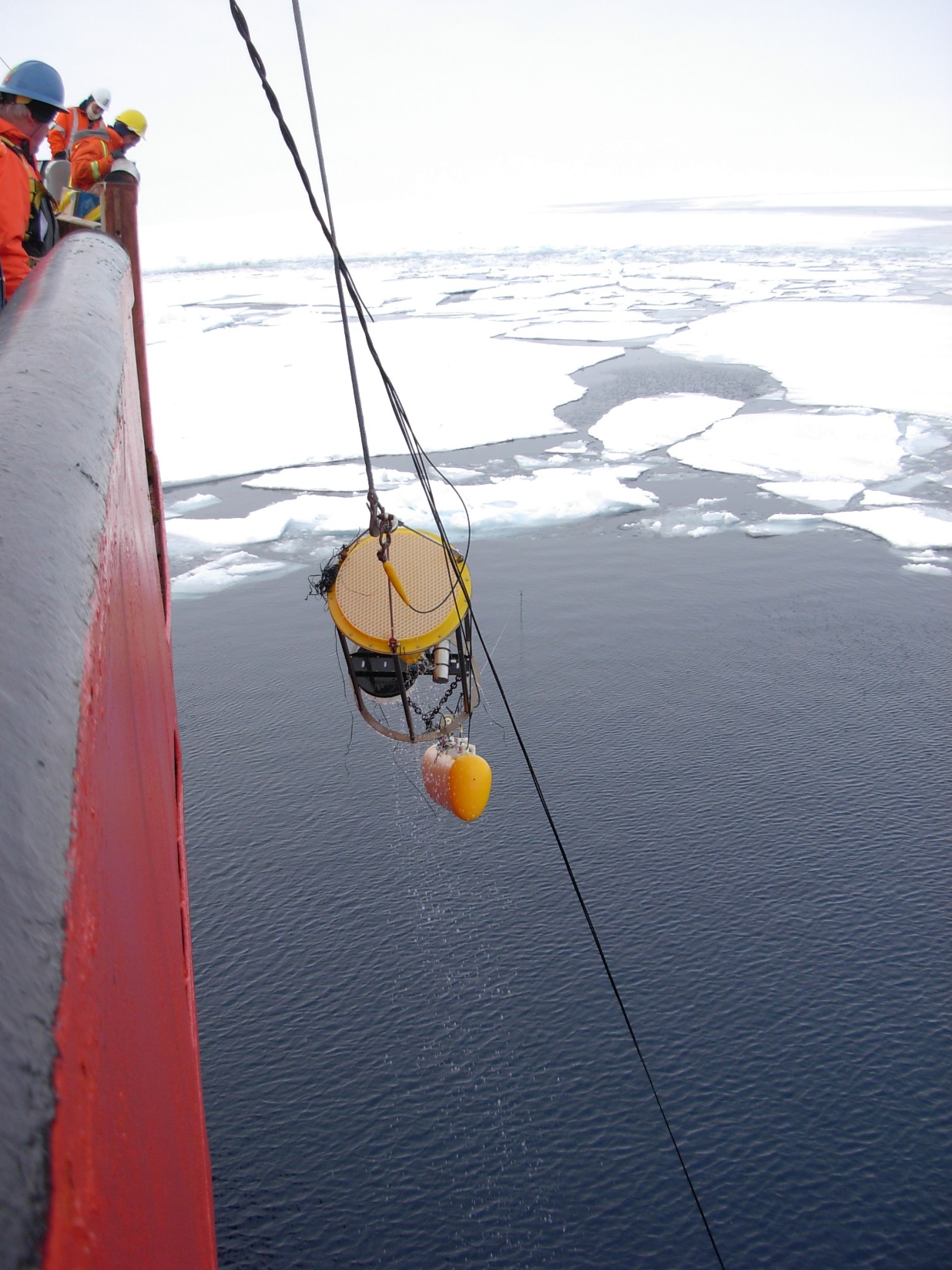Bachelor's and Master's theses
Zn uptake in light-limited marine diatoms.
Thierry Solms (2016)
Two distinct cultured marine diatoms were exposed to a range of light levels. Slower growth at low photon flux densities suggest that both organisms suffer from the decreasing availability of light. The cellular zinc (Zn) content was found to be species and light dependent, a finding that is important to better understand the global biogeochemical cycling of this metal in the ocean.
Constraints on continental organic carbon sources in the North American Arctic Ocean from lead isotopes.
Oliver Kost (2016)
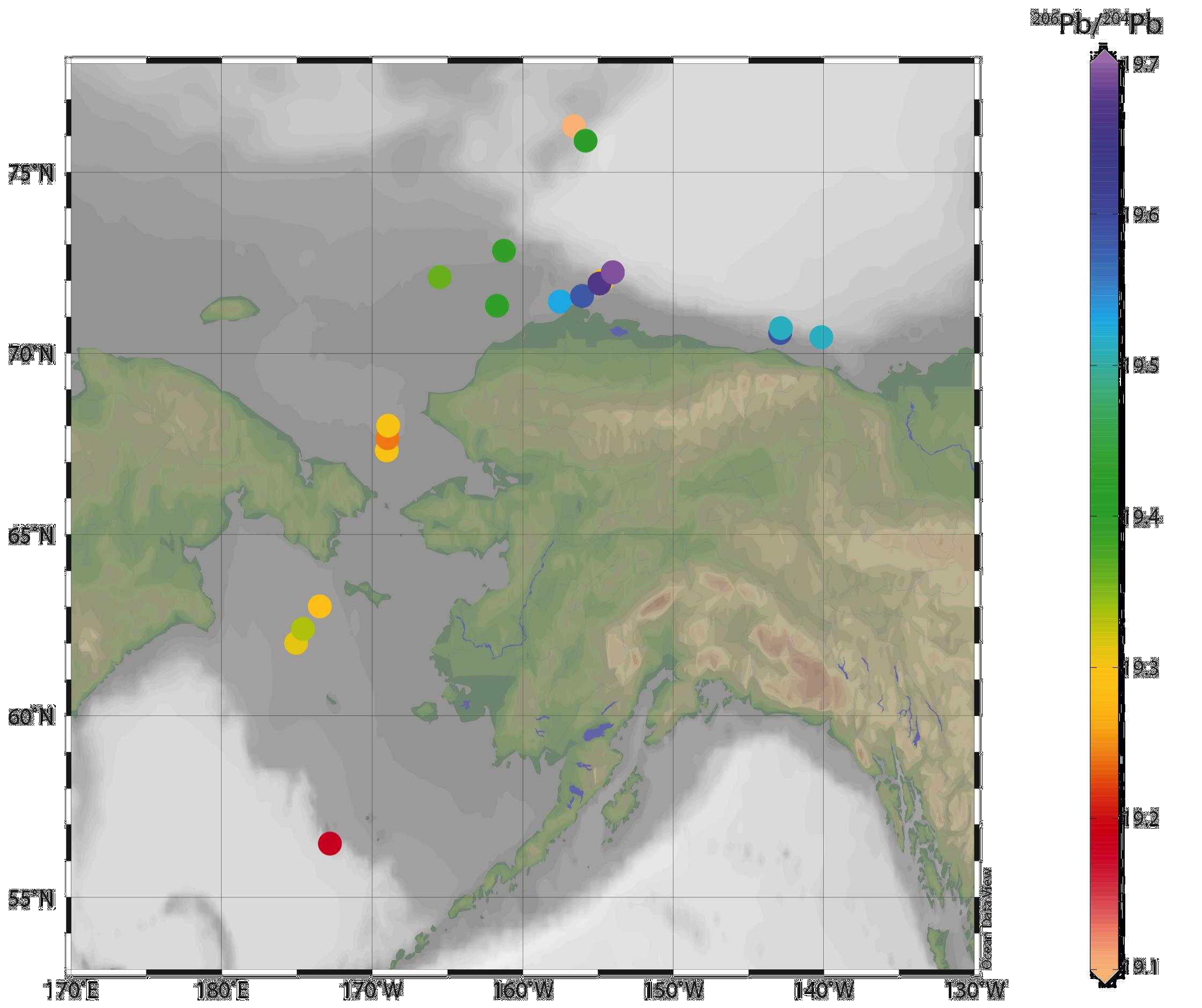
Lead isotope compositions (206Pb/204Pb) in the detrital fraction of studied sediment samples from the Arctic Ocean. The thesis aimed to put constraints on the continental source of detrital sediments and associated organic carbon in the Arctic, complementing the previous Master thesis by Melissa Schwab (below). Lead isotopes in sediments are, however, also affected by mineral sorting and weathering processes.
Neoproterozoic climate perturbations and their chemical traces in the oceanic carbonates of the Australian Basins.
Nikola Krake (2015)
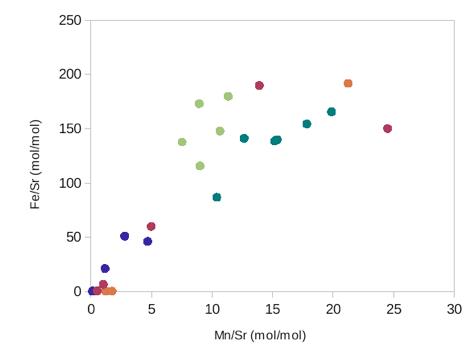
Redox sensitive (Fe, Mn) geochemical signatures in a suite of Neo-Proterozoic carbonates (500-635 million years old). The Fe/Sr vs. Mn/Sr co-variance and high Mn/Sr suggest that some carbonates have been diagenetically overprinted by metamorphic fluids. Only the carbonate samples with low Fe/Sr and Mn/Sr (bottom left) are useful for reconstructing past ocean chemistry based on the geochemistry in these neoproterozoic carbonates.
Find out more about our research
chevron_right Geochemical evolution of the Earth's surfaceSedimentological and geochemical studies on microbialite structures and sediments from Lagoa Salgada, Rio de Janeiro, Brazil.
Christelle Bovier (2014-2015)
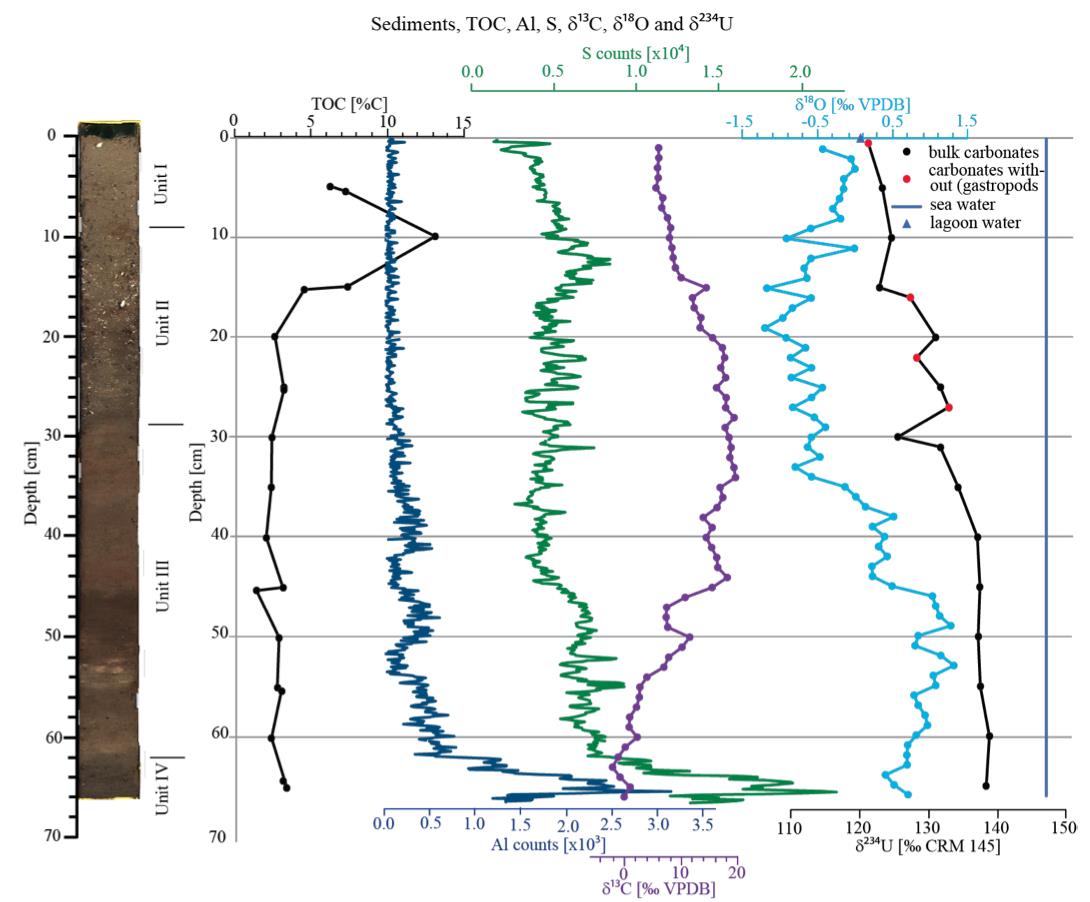
Geochemical signatures in a sediment core from hypersaline lagoon, Lagoa Salgada in Brazil. At depth the sediments are characterized by unusually high d13C, potentially due to methanogenesis during early diagenesis. The d234U signatures suggests the lagoon waters are a mixture of freshwater and seawater. Understanding the specific conditions favoring the high d13C in the sediments is of critical importance for the interpretation of global d13C excursions during ancient times on Earth.
Coupled organic and inorganic tracers of particle flux processes in the North American Arctic Ocean.
Melissa Schwab (2014-2015)
